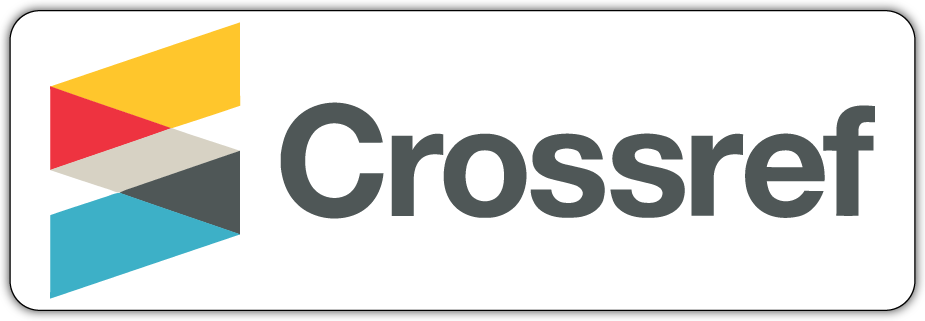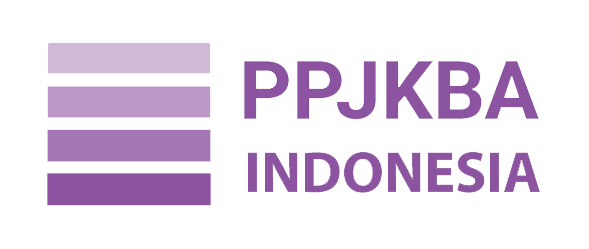Developing Arabic Language Content on TikTok and Instagram: Educational Opportunities for the Digital Native Generation
Abstract
The rapid growth of social media has positioned it as an influential alternative learning space, particularly for the digital native generation that actively engages with visual and interactive content. This study seeks to examine the educational potential of Arabic language learning through short-form videos disseminated via popular platforms such as TikTok and Instagram. Employing a descriptive qualitative method, data were gathered through systematic content analysis of Arabic learning videos, in-depth interviews with digital educational content creators, and focused group discussions with students of Arabic Language Education (PBA). The findings indicate that short video formats, enhanced with appealing visual elements, interactive features, and communicative language styles, significantly capture learners’ attention while simultaneously fostering motivation and sustained engagement. In addition, these platforms provide a more informal and dynamic interaction space between educators and learners, enabling flexible knowledge exchange within the digital ecosystem. The study underscores the strategic urgency of developing micro-content-based approaches in order to make Arabic language education more adaptive, innovative, and responsive to the learning patterns of Generation Z.
Keywords
Full Text:
PDFReferences
Alsuwaylimi, A. A. (2024). Arabic dialect identification in social media: A hybrid model with transformer models and BiLSTM. Heliyon, 10(17), e36280. https://doi.org/10.1016/j.heliyon.2024.e36280
Amzaludin, A., Ain, I. Q., & Khumairah, E. S. (2023). Akun TikTok (@kampungarabalazhar) Sebagai Media Belajar Bahasa Arab Online. Jurnal Simki Pedagogia, 6(2), 554–565. https://doi.org/10.29407/jsp.v6i2.331
Berger, J., Moe, W. W., & Schweidel, D. A. (2023). What Holds Attention? Linguistic Drivers of Engagement. Journal of Marketing, 87(5), 793–809. https://doi.org/10.1177/00222429231152880
Deng, X., & Yu, Z. (2023). An extended hedonic motivation adoption model of TikTok in higher education. Education and Information Technologies, 28(10), 13595–13617. https://doi.org/10.1007/s10639-023-11749-x
Dinia, H. R., Jannah, M., Mustofa, S., & Helalsah, I. (2024). Arabic Learning Strategies Through Tiktok Entertainment Content to Attract Interest in Learning Arabic. Jurnal Al-Maqayis, 11(1), 88–120. https://doi.org/10.18592/jams.v11i1.12366
Erdoğdu, F., & Çakıroğlu, Ü. (2021). The educational power of humor on student engagement in online learning environments. Research and Practice in Technology Enhanced Learning, 16(1), 9. https://doi.org/10.1186/s41039-021-00158-8
Febriani, S. R., Widayanti, R., Husna, I., Yasmadi, Y., & Guettaoui Bedra, K. (2024). Using Communicative Based Teaching Materials Through Instagram For Increasing Creativity And Speaking Skills. Lentera Pendidikan : Jurnal Ilmu Tarbiyah Dan Keguruan, 27(1), 35–46. https://doi.org/10.24252/lp.2024v27n1i3
Greenhow, C., & Lewin, C. (2016). Social media and education: reconceptualizing the boundaries of formal and informal learning. Learning, Media and Technology, 41(1), 6–30. https://doi.org/10.1080/17439884.2015.1064954
Hilmi, M., Alvina, V. T., & Taufiqurrochman, R. (2024). The Potential Utilization Of Tiktok As Digital Media In Arabic Language Learning. Kitaba, 2(1), 1–9. https://doi.org/10.18860/kitaba.v2i1.25417
Inan, D. I., Hidayanto, A. N., Juita, R., Hasian, C. Y., Luvian, K., Leonardo, Ian, S. L., & Pratama, S. (2023). How personal, technical, social environments affecting generation Z to utilise video-based sharing platform in learning process during crisis? Research and Practice in Technology Enhanced Learning, 19, 003. https://doi.org/10.58459/rptel.2024.19003
Ishaq, K., Mat Zin, N. A., Rosdi, F., Jehanghir, M., Ishaq, S., & Abid, A. (2021). Mobile-assisted and gamification-based language learning: a systematic literature review. PeerJ Computer Science, 7, e496. https://doi.org/10.7717/peerj-cs.496
John W. Creswell, C. N. P. (2013). Qualitative Inquiry and Research Design: Choosing Among Five Approaches (4th ed.). SAGE Publications. https://books.google.co.id/books?hl=id&lr=&id=DLbBDQAAQBAJ&oi=fnd&pg=PP1&dq=Creswell,+J.+W.+(2013).+Qualitative+Inquiry+and+Research+Design:+Choosing+Among+Five+Approaches&ots=-is13gFWOu&sig=Wkocl_F6Am4sy55ByKID9zUtYeo&redir_esc=y#v=onepage&q=Creswell%2C
John W. Schwieter, A. B. (2024). The Cambridge Handbook of Language Standardization. Language and History. https://doi.org/10.1080/17597536.2024.2316442
Koehler, A. A., & Vilarinho-Pereira, D. R. (2023). Using social media affordances to support Ill-structured problem-solving skills: considering possibilities and challenges. Educational Technology Research and Development, 71(2), 199–235. https://doi.org/10.1007/s11423-021-10060-1
Lambton-Howard, D., Kiaer, J., & Kharrufa, A. (2021). ‘Social media is their space’: student and teacher use and perception of features of social media in language education. Behaviour & Information Technology, 40(16), 1700–1715. https://doi.org/10.1080/0144929X.2020.1774653
Lee, Y.-J. (2023). Language learning affordances of Instagram and TikTok. Innovation in Language Learning and Teaching, 17(2), 408–423. https://doi.org/10.1080/17501229.2022.2051517
Literat, I. (2021). “Teachers Act Like We’re Robots”: TikTok as a Window Into Youth Experiences of Online Learning During COVID-19. AERA Open, 7. https://doi.org/10.1177/2332858421995537
Looi, C.-K., Lim, K. F., Pang, J., Koh, A. L. H., Seow, P., Sun, D., Boticki, I., Norris, C., & Soloway, E. (2016). Bridging Formal and Informal Learning with the Use of Mobile Technology. In Future Learning in Primary Schools (pp. 79–96). Springer Singapore. https://doi.org/10.1007/978-981-287-579-2_6
Martínez-Sanz, R., Buitrago, Á., & Martín-García, A. (2023). Comunicación para la salud a través de TikTok. Estudio de influencers de temática farmacéutica y conexión con su audiencia. Revista Mediterránea de Comunicación, 14(1), 83. https://doi.org/10.14198/MEDCOM.23435
Matamoros-Fernández, A. (2023). Taking Humor Seriously on TikTok. Social Media + Society, 9(1). https://doi.org/10.1177/20563051231157609
Ming, S., Han, J., Li, M., Liu, Y., Xie, K., & Lei, B. (2023). TikTok and adolescent vision health: Content and information quality assessment of the top short videos related to myopia. Frontiers in Public Health, 10. https://doi.org/10.1177/20563051231157609
Moh’d Zakarneh, B., Elkhattat, D., Yousef, E., & Alazab, A. (2021). Utilizing Social Media Networks as Learning Tools for Foreign Languages among Arab Youth in UAE. International Journal of English Language and Literature Studies, 10(2), 132–144. https://doi.org/10.18488/journal.23.2021.102.132.144
Morady Moghaddam, M., & Esmaeilpour, F. (2023). Persuasive Language in ELT-Related Ads on Social Media. Journal of Psycholinguistic Research, 52(4), 1263–1288. https://doi.org/10.1007/s10936-023-09942-7
Priantiwi, T. N., & Abdurrahman, M. (2023). Analisis Konten Pembelajaran Bahasa Arab Pada Media Tiktok. Jurnal Ilmiah Profesi Pendidikan, 8(3), 1365–1371. https://doi.org/10.29303/jipp.v8i3.1502
Salah, R. (2023). Arabic-English Mixing among English-Language Students at Al alBayt University: A Sociolinguistic Study. International Journal of Arabic-English Studies, 23(2), 319–338. https://doi.org/10.33806/ijaes.v23i2.466
Schaadhardt, A., Fu, Y., Pratt, C. G., & Pratt, W. (2023). “Laughing so I don’t cry”: How TikTok users employ humor and compassion to connect around psychiatric hospitalization. Proceedings of the 2023 CHI Conference on Human Factors in Computing Systems, 1–13. https://doi.org/10.1145/3544548.3581559
Schellewald, A. (2023). Understanding the popularity and affordances of TikTok through user experiences. Media, Culture & Society, 45(8), 1568–1582. https://doi.org/10.1177/01634437221144562
Shelton, C. C., Curcio, R., Carpenter, J. P., & Schroeder, S. E. (2022). Instagramming for Justice: The Potentials and Pitfalls of Culturally Relevant Professional Learning on Instagram. TechTrends, 66(5), 837–854. https://doi.org/10.1007/s11528-022-00758-1
Suryati, E. T., Meidasari, V. E., & Said, M. (2024). The Use of Tiktok as a Tool for English Grammar Instruction: An Analysis of the @Excellentinhousetraining Tiktok Account. INTERNATIONAL JOURNAL OF MULTIDISCIPLINARY RESEARCH AND ANALYSIS, 07(11). https://doi.org/10.47191/ijmra/v7-i11-18
Tan, K. H., Rajendran, A., Muslim, N., Alias, J., & Yusof, N. A. (2022). The Potential of TikTok’s Key Features as a Pedagogical Strategy for ESL Classrooms. Sustainability, 14(24), 16876. https://doi.org/10.3390/su142416876
Turgut KOÇ, C. (2018). Arapça Öğretiminde Müziğin Rolü Ve Ders Materyali Olarak Şarki Kullanimi. Journal of Turkish Studies, 13(Volume 13 Issue 20), 561–573. https://doi.org/10.7827/TurkishStudies.14182
Zulkepli, M. K. A., Zakaria, M. F., & Nawawi, M. A. A. B. M. (2025). The Role of TikTok in Promoting Arabic Language Learning among Millennials and Gen Z. International Journal of Research and Innovation in Social Science, IX(III), 4729–4738. https://doi.org/10.47772/IJRISS.2025.90300379
DOI: http://dx.doi.org/10.35931/am.v8i2.5373
Refbacks
- There are currently no refbacks.
Copyright (c) 2025 Al Mi'yar: Jurnal Ilmiah Pembelajaran Bahasa Arab dan Kebahasaaraban

This work is licensed under a Creative Commons Attribution-ShareAlike 4.0 International License.
Al Mi'yar: Jurnal Ilmiah Pembelajaran Bahasa Arab dan Kebahasaaraban
Index by:
![]()
![]()
![]()
![]()
![]()
![]()
![]()
![]()
![]()
![]()

Publish by:
Program Studi Pendidikan Bahasa ArabSekolah Tinggi Ilmu Al-Qur'an AmuntaiContact us:
Address: Jl. Rakha Pakapuran, Amuntai Utara
Kabupaten : Hulu Sungai Utara
Kode Pos : 71471
Provinsi : Kalimantan Selatan
Email: jurnal.almiyar@gmail.com

Ciptaan disebarluaskan di bawah Lisensi Creative Commons Atribusi-BerbagiSerupa 4.0 Internasional.
___________________________________________________________________________________________________________________________________________________________________
Ciptaan disebarluaskan di bawah Lisensi Creative Commons Atribusi-BerbagiSerupa 4.0 Internasional.

 slot88
slot88








